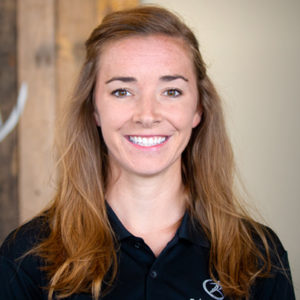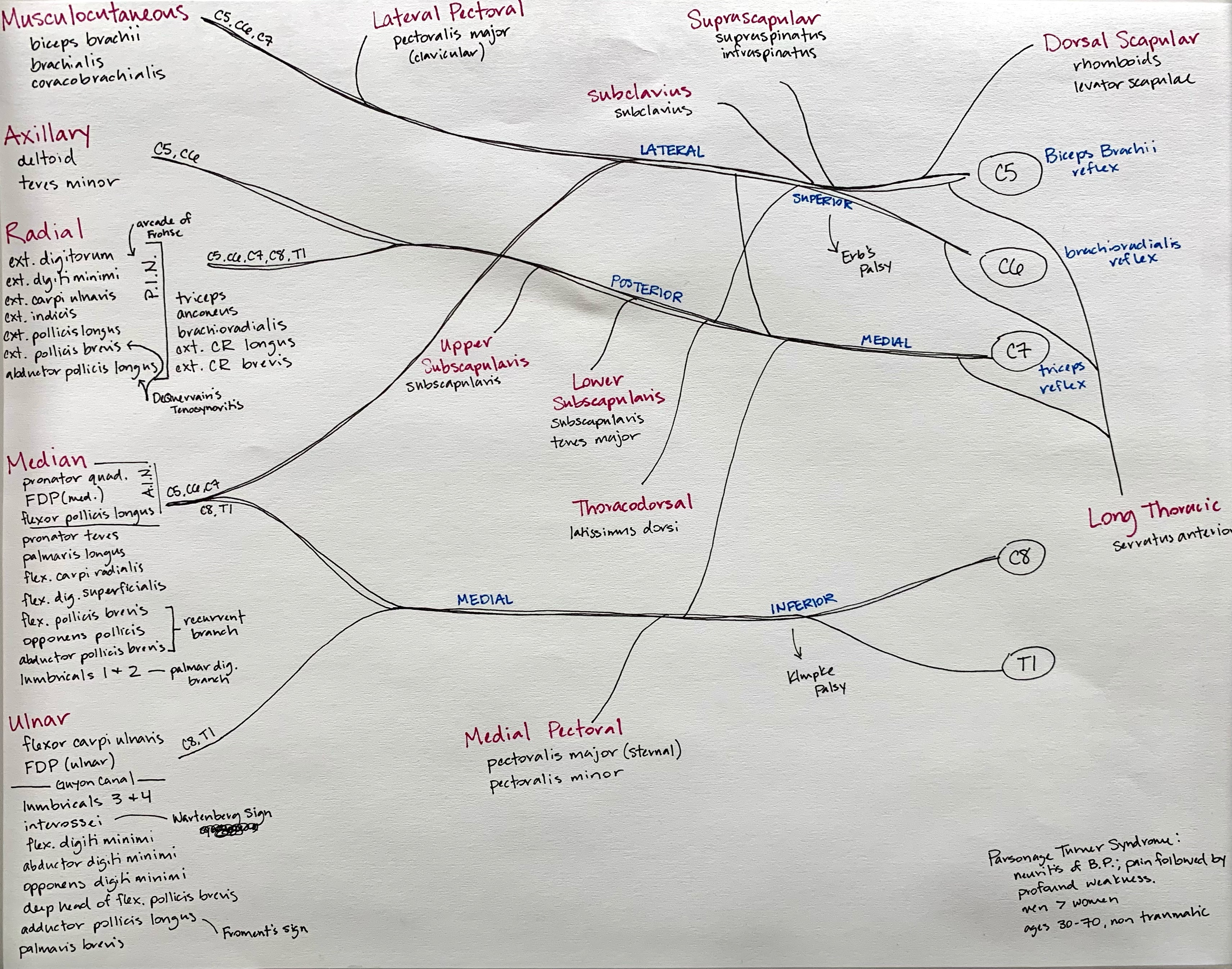
OCS Exam Prep Study Plan and Materials

Suzanne Leach, DPT, OCS
Your initial application has been received and you’re one payment away from officially being signed up to take your orthopaedic specialty exam for physical therapy. Just by arriving here, you’ve likely accomplished quite a bit in your career. Now the real fun begins!
My name is Suzanne Leach and I’m a physical therapist at Rehabilitation and Performance Institute in Owensboro, Kentucky. I recently became board certified in orthopaedics and am a graduate of the University of Evansville’s DPT program, where I currently serve as an adjunct professor. If you’re like I was, you’ve recently googled “preparing for the OCS exam” and now stumbled upon this blog post. I found information regarding the exam to be… ehh… lacking? I’d like to try and help with that by sharing what worked for me and what I’ve learned from others who have embarked on this journey.
First: Know How You Learn
Before you dive in, an important step to prepare for any exam is ensuring you have knowledge of your learning preferences and seek out a variety of methods in your resources. Regardless, you must tackle a lot of information for the OCS, so I encourage you to assess your plan and make sure you will be utilizing a variety of methods.
For me, this often meant sitting and reading or writing information for an hour, then later going on a run and listening to a podcast covering the same information. Everyone is different and you’ll find what works best for you, but due to the breadth of the information, this may need to look different than it did in PT school. Researchers have found that while you may have a preference in learning style, you must use multiple modes of studying to be most effective.
Second: Take Your First Practice Exam
Taking practice exams and reviewing why the right answer is correct and what is wrong with the wrong answers is an incredible way to learn and I will recommend a lot of that later. But we will start off with a practice exam to understand how the questions are worded, content that is covered, and areas in which you need to focus. MedBridge has a lot of practice exams and questions. So go ahead and complete one to start off. But here is a KEY, don’t let your results discourage you. Our goal at this point is just to get a feel for the exam and things to look for when you study. Additionally, MedBridge questions tend to be a lot harder than the actual OCS test, but I would rather have that than it be too easy and then be unprepared for the OCS exam.
Next: Get Your Hands on the Right Resources
If you haven’t already, the first resource I would seek out is the APTA’s Current Concepts. The 5th edition is the latest and most up to date. I can’t say I read every word to every page of the Current Concepts (well hello, temporomandibular joint!), but I read a lot. And it is a lot. These monographs can be great for reviewing anatomy and arthrokinematics, summarizing research, and outlining post-operative care. I found the edition on the shoulder to be especially helpful, while the lumbar spine section not as much. Reading these can be very time consuming, so I would begin reviewing them early so you can gauge how much or how little time you should focus. For me, especially in areas where I felt weak, this was a good starting point to launch my preparation.
The next resource I would include are the most recent Clinical Practice Guidelines. These “CPG’s” (not to be confused with also important clinical prediction rules) are produced by the Academy of Orthopaedic Physical Therapy and outline information surrounding diagnosis and treatment that is sure to come up on your exam. “It depends” will not be an option on your exam-- as much as we know it may be true. The CPG’s ranking of levels of evidence can be helpful in prioritizing interventions or knowing which treatment you would do first, which may be a frequently asked question.
I would consider making a list of the best interventions for each CPG and knowing these in the same depth you should know the brachial plexus (hint, hint). The OCS Field Guide podcast has great summaries of the CPG’s… more on this below. I found studying the CPG’s to be one of the most straightforward portions of my OCS preparation and actually enjoyed working through these. I found it easy to take the information I was reading and apply it to patients the very same day. Making you a better clinician is the whole point in doing all this anyway, right? Spend ten bucks and go get all these CPG’s printed. They’ll be a vital part of your preparation.
Low Hanging Fruit
Just remember with all of this, don’t forget the basics. Research and physical therapy, in general, is ever-changing. The definition of sensitivity and specificity, origins and insertions, and concepts of arthrokinematics are not. Having a good understanding of basic principles in which you might be tested can be low hanging fruit if you understand these concepts well. I was personally surprised by the rigor of the questions regarding evidence-based practice. I’m a nerd and loved my “scientific inquiry” courses in PT school where we analyzed research and did math (yay). However, even with my love of numbers, I found these questions challenging and would certainly encourage you to study those basic formulas and know how to interpret data.
In regard to the basics, I would also emphasize knowing the peripheral nerves very well. Not only will being able to draw the brachial plexus be important, but having a list of muscle innervations, entrapment sites, and special tests associated with various diagnoses will help lower your stress and make complex questions feel straightforward. 
And don’t forget peripheral nerves exist in the lower extremity. If the fact that the deep branch of the peroneal nerve branches from the sciatic, then common peroneal nerve and innervates extensor hallucis longus doesn’t feel second nature to you… it’s time to allot more time here before rushing to what cool exercises you can use following a lower extremity injury. This stuff isn’t glamorous, but it’s necessary and represents more low hanging fruit.
Put It All Together
Okay, okay… so here’s what you know so far. I told you to make sure you’re studying in a variety of ways. Then I told you about over 1000 pages of reading you can do to study. Then I told you to review what you learned your first year of PT school. More old written notes. Not cool. Hang in there.
Another resource I found useful was MedBridge’s OCS Prep course. This course is designed not only for OCS examination prep, but to aid in improving your skill-set as a clinician. Parts of this course feature instruction on manual techniques and other hands-on skills that are less suited for exam study, but still great for improving your hands-on skills. Due to this, you may find some sections more helpful than others. I felt the “Foot and Ankle” and “Differential Diagnosis” sections were particularly useful and straightforward.
One warning regarding the MedBridge course: the practice exams are brutal. There are four, one-hundred question practice exams included in this course. I topped out somewhere in the low 50% range before passing my OCS on the first try. Don’t let this discourage you. Use these exams as a guide to help you with your study time, based on which categories you fare better or worse. It’s deflating to see yourself get answers wrong, however, having 400 practice questions creates a great learning opportunity. I found reviewing each question and possible choices, breaking down why choices were correct or incorrect, really aided in my depth of knowledge.
Practice, Practice, Practice
As you’ve likely been out of school for at least a year or two, possibly more, don’t forget to stay in practice of sitting and taking an exam. For me, test fatigue was a real thing and the OCS can be a bit of a marathon. Additionally, on days where I wasn’t up for diving into new information, taking a practice exam or reviewing via quizzes was a good way to stay engaged.
In addition to the MedBridge practice exams mentioned above, I thought the “ACE the OCS” had solid practice questions and I found the explanation regarding correct vs. incorrect answers useful. The website OCS Exam Prep, which is run by physical therapist Ryan Grella, offers free mini quizzes over various body parts. These quizzes can serve as a quick preview before tackling information for that body region.
Be ready to take your exam prep wherever you go...
Because you’re likely a busy physical therapist working a full-time job on top of studying, I think podcasts can be a great way to cover material while commuting or even working out. The two podcasts I found to be the most helpful were “Certified: The OCS Prep Podcast” and “OCS Field Guide: A PT Podcast.”
The OCS Prep Podcast is hosted by doctors Alexis Hutchinson and Amanda Everden, both board certified orthopedic clinical specialists. Over 40 episodes are available currently and they are all short in length and easy to digest. I found their episode covering upper extremity nerve entrapments to be especially helpful and went back and listened to this several times.
Another podcast, offering over 20 episodes, is the OCS Field Guide: A PT Podcast. Many of these episodes summarize various CPG’s. I found it helpful to independently review a CPG then listen to the associated episode. David Smelser and Austin Kercheville (your new best friends) do a great job of hitting the nuts and bolts and discussing how you may be asked questions regarding the material. For me personally, this was a good way to consolidate the information I just learned but also served as a check on if I missed anything important in my own studying.
In addition to the podcast, you can find Physio Field Guide on Patreon. For a small fee you can gain access to extra study materials, additional podcasts, and participate in group study sessions via zoom. I personally loved the group sessions. Not only was it extra exposure to practice questions, but it was nice to see faces and get connected with other PT’s going through this same struggle you are.
Take Care of Yourself
My final, but maybe most important piece of advice would be this— don’t allow yourself to live on an island. The time building up to your exam cannot only feel long, but lonely. Not only do I recommend connecting with others who may be taking their OCS, but any physical therapy specialty exam. Social media, MedBridge, and Patreon can be great for this. MedBridge has a Facebook group where you can ask questions and connect with others.
However, don’t forget to live a little too. Spending time with friends who think the arcade of Frohse is a place you’d visit as a kid can offer needed mental breaks. Get outside. Exercise. Sleep. Just like in the clinic, someone who prioritizes their physical and mental health will reach their goals faster and have generally better outcomes.
If you are looking for a comprehensive list of all the OCS resources, click here
About Suzanne Leach, DPT, OCS










